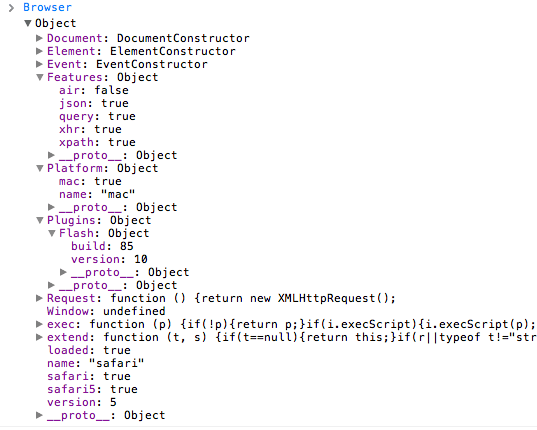PHP, SSL, and cURL SSL3_GET_SERVER_CERTIFICATE Errors
I recently developed a complex system for a customer that involved PHP, cURL, and a SSL connection to a third party vendor. The third party vendor would validate the security certificate of the source (the system I created) and either allow or reject access. My code looked like this:
$ch = curl_init();
curl_setopt($ch,CURLOPT_URL,'https://thirdparty.com/token.php'); //not the actual site
curl_setopt($ch,CURLOPT_TIMEOUT,60);
curl_setopt($ch,CURLOPT_RETURNTRANSFER,1);
curl_setopt($ch,CURLOPT_POST,1);
curl_setopt($ch,CURLOPT_POSTFIELDS,'customer_id='.$cid.'&password='.$pass);
curl_setopt($ch,CURLOPT_SSL_VERIFYPEER,true);
curl_setopt($ch,CURLOPT_CAINFO,'ca-bundle.crt'); /* problem here! */
$result = curl_exec($ch);
if(empty($result)) { /* error: nothing returned */ } else { /* success! */ }
curl_close($ch);
Unfortunately I was persistently receiving the following error message:
error:14090086:SSL routines:SSL3_GET_SERVER_CERTIFICATE:certificate verify failed
It turns out that the SSL bundle file I was using was old, as was the default bundle that came with the old version of cURL the shared hosting server. Essentially the third party didn't trust that the system's SSL certificate was valid. I downloaded Mozilla's bundle file, named it mozilla.pem and changed my PHP code to:
$ch = curl_init();
curl_setopt($ch,CURLOPT_URL,'https://thirdparty.com/token.php'); //not the actual site
curl_setopt($ch,CURLOPT_TIMEOUT,60);
curl_setopt($ch,CURLOPT_RETURNTRANSFER,1);
curl_setopt($ch,CURLOPT_POST,1);
curl_setopt($ch,CURLOPT_POSTFIELDS,'customer_id='.$cid.'&password='.$pass);
curl_setopt($ch,CURLOPT_SSL_VERIFYPEER,true);
curl_setopt($ch,CURLOPT_CAINFO,'mozilla.pem'); /* fixed! */
$result = curl_exec($ch);
if(empty($result)) { /* error: nothing returned */ } else { /* success! */ }
curl_close($ch);
I share this with you because it cost me over three hours. Hopefully this will save someone time and frustration in the future.





Thanks for sharing. That’s going to same someone a great deal of time.
Great post. Thanks…
“Hopefully this will save someone time and frustration in the future.”
Yes, it has saved many time to me. There is, however, a point that you don’t explain in your article: where to put the Mozilla’s bundle file? I develop using WAMP, and this is the code I use:
The
CURLOPT_SSL_VERIFYHOSToption verify that the name field matches the host name of the server.More information:
Using cURL in PHP to access HTTPS (SSL/TLS) protected sites
I still can’t get mine to work. I’m getting this problem with my Facebook app.
Dear somedude, did you fix your SSL CURL error that you were experiencing with your Facebook app? I’m experiencing the same thing and cannot get it fixed!
Dude, you saved my life! ;o)
Very helpful. Thank you!
i am getting this now.
error setting certificate verify locations:
Thanks david… But I don’t understand How its working for common cert file ,that I downloaded from above link..
THANKS YOU SOOOOO MUCH.
This _did_ save me hours of time!
David, thank you for saving me three invaluable hours!
mozilla rocks
thanks dave
Thanks David, it saved my important hours:). I have faced the same problem and this article solved all the things.
Keep posting man Thanks again.
Thank you for the info and link, but I think what you mean is that *your* system did not trust the third party’s certificate.
Or you could just turn ssl verification off
Thank you so much! I only wish I had found this post sooner.
you can check if both ends use the same ssl version: http://newexception.com/php-curl-https
Hi David,
Even after updating the certs, I get same error
I have also set absolute path for the latest crt file
curl_setopt($ch, CURLOPT_CAPATH, "/path/to/certfile"); curl_setopt($ch, CURLOPT_CAINFO, "cacert.pem");—————-
successfully set certificate verify locations:
* CAfile: none
CApath: /etc/ssl/certs
* SSL certificate problem, verify that the CA cert is OK. Details:
error:14090086:SSL routines:SSL3_GET_SERVER_CERTIFICATE:certificate verify failed
* Closing connection #0
—————-
Thanks a lot !! It helped me ..
Saved me a bunch of time too. Thanks.
Hello, is it secure to put the “cacert.pem” file under the public site directory? Or it’s better to put it out of the web directory?
Thank you
Thx! Dude! you save my time!